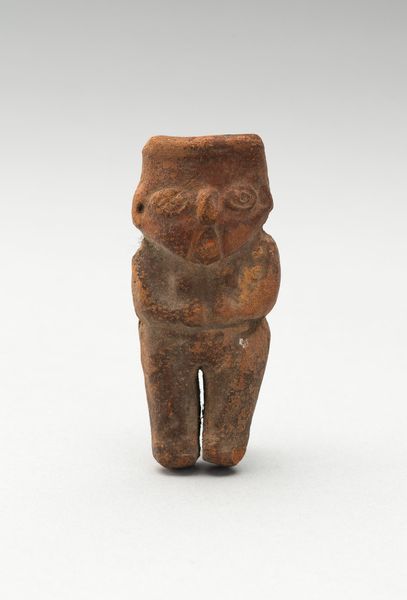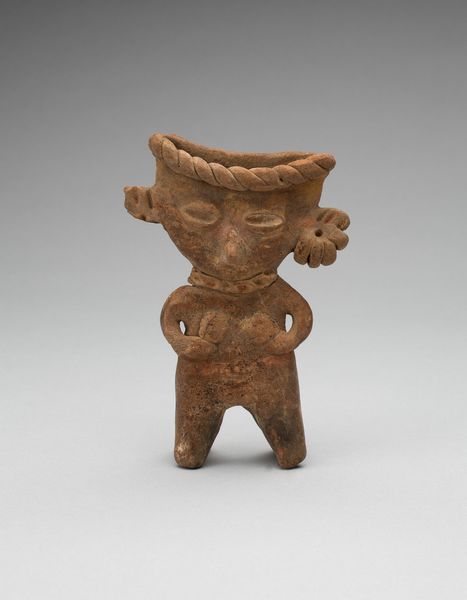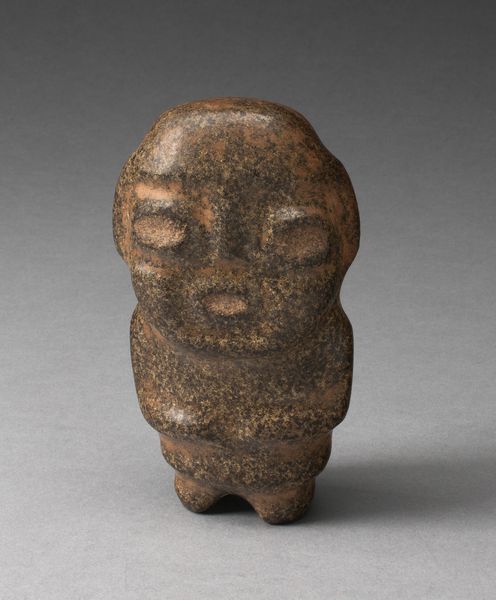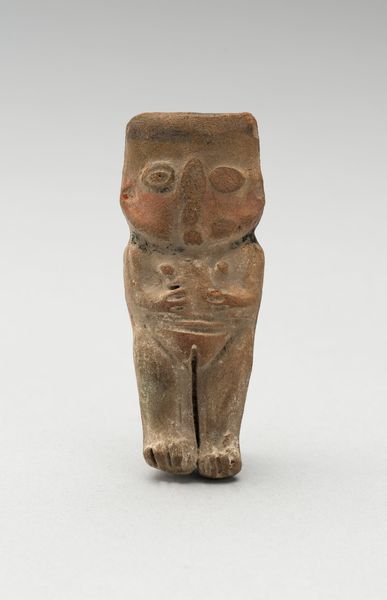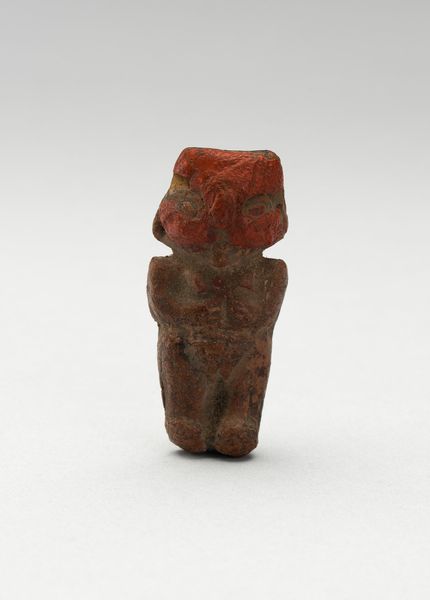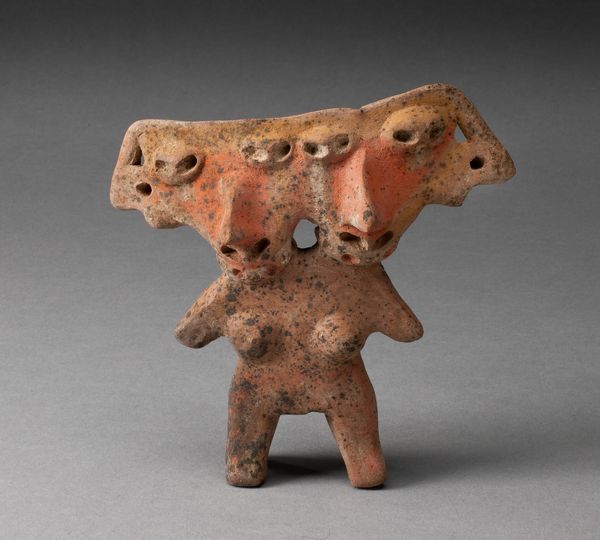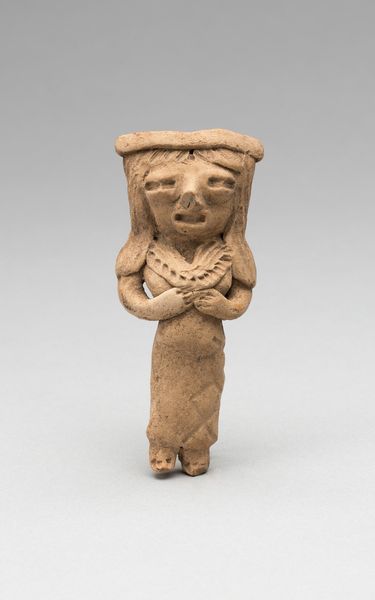
Mold-Made Female Figurine with Pierced Holes in Head and Shoulders c. 100 - 600
0:00
0:00
ceramic, sculpture, terracotta
#
ceramic
#
figuration
#
sculpture
#
terracotta
#
indigenous-americas
Dimensions: 5.6 × 2.9 cm (2 3/16 × 1 1/8 in.)
Copyright: Public Domain
Curator: Here we have a ceramic female figurine crafted by the Moche people, dating roughly from 100 to 600 CE. Notice the pierced holes along the head and shoulders – details that suggest possible ritual or ornamental functions. What strikes you most about this piece? Editor: The earthiness. It looks as though it's barely been fired. Raw, almost. There is an explicit portrayal of female sexuality and a vulnerability that cuts through the centuries. It’s incredibly potent. Curator: The material speaks to me too. It wasn’t necessarily the skill involved, but consider the accessibility of clay and how that affected labor investment, who created it, and how its raw materiality impacts interpretations of the figure's sensuality and status. Were these mass produced or unique offerings? Editor: And beyond production, what are the narratives surrounding female sexuality being depicted by, and possibly for, a patriarchal society? We must examine these objects through lenses of power and gender, questioning how such portrayals reinforced or subverted existing norms. Is she an earth mother, a fertility symbol, or simply a human representation of feminine sexuality available for male consumption? Curator: The question of her "purpose" and how that ties into material production is something that truly interests me. These are not gleaming marble sculptures, but a form that’s so fundamentally of the earth – how would her audience have interacted with the figure, with this representation of a human? Editor: Let’s not overlook that these forms and representations have their own complex narratives, rooted in indigenous epistemologies that intersect and challenge Western notions of art, beauty, and even gender. How might decolonizing our interpretations reframe these figures? Curator: Absolutely. Viewing the mold and ceramic not simply as craft but a conscious choice to integrate local and available resources adds layers of meaning. Thank you for reminding us that we have a duty to avoid simplistic understandings. Editor: Agreed. These figures, beyond their evident sensuality, carry encoded stories waiting to be carefully and respectfully unveiled, shifting from passive objects to powerful agents of cultural and historical dialogue.
Comments
No comments
Be the first to comment and join the conversation on the ultimate creative platform.
